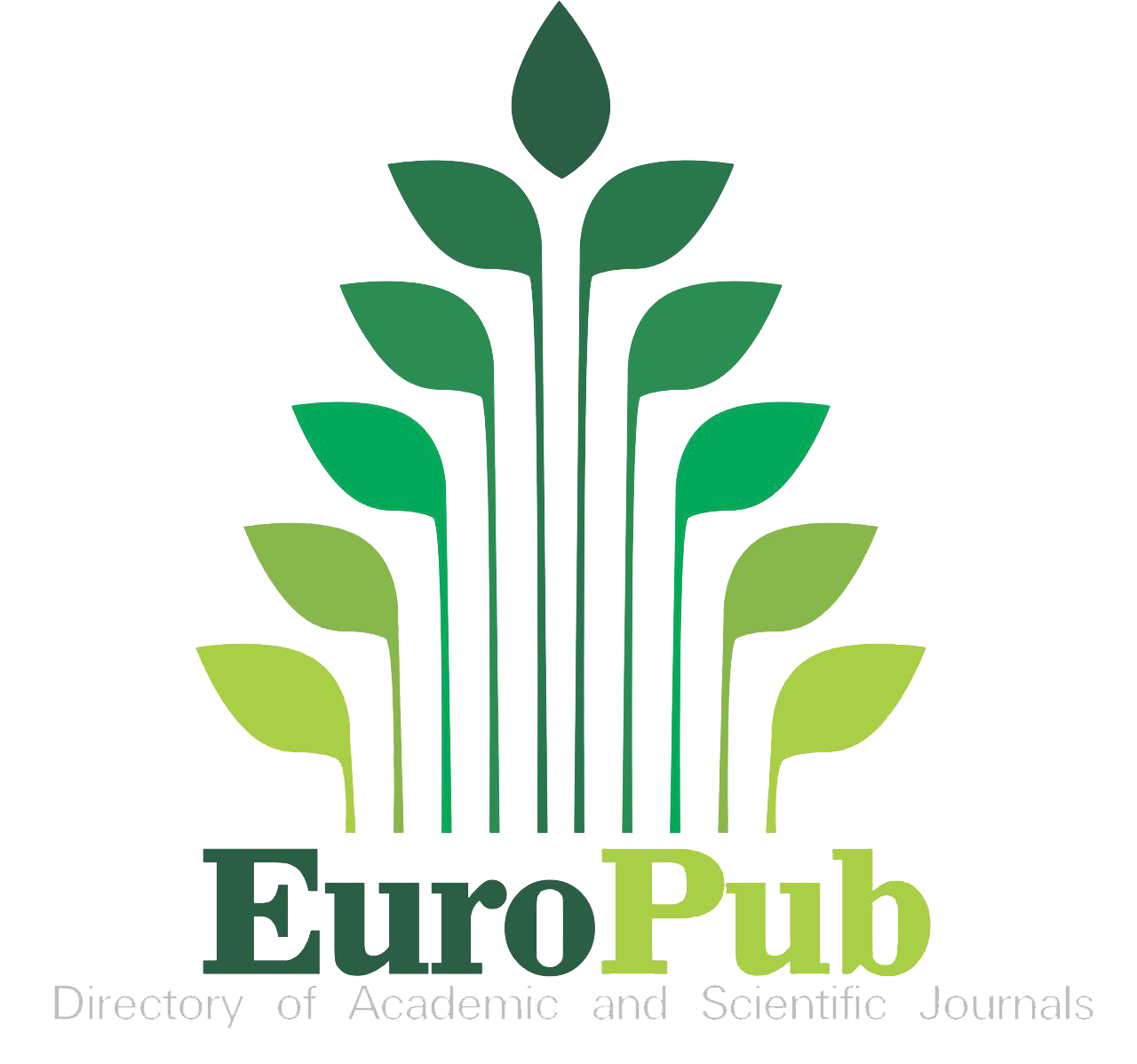Analysis performance potential of Startups based on ambidexterity
DOI:
https://doi.org/10.16930/2237-766220223323Keywords:
Organizational Ambidexterity, Science Parks, Startups, PerformanceAbstract
Considering that ambidexterity is the capability of an organization to create, innovate and obtain new discoveries to ensure long-term sustainability, while improving internal procedures aimed at short-term operational efficiency, this research aimed to evaluate the potential that enterprises sheltered at Guamá Science and Technology Park (Belém – PA) have, to achieve a superior performance, based on their ambidextrous management characteristics. This research contributes to advances in strategies of Park's organizations and intends to inspire other enterprises with the same characteristics. Face-to-face interviews were carried out to apply a questionnaire to 19 resident managers of Guamá PCT, and the data were initially treated with descriptive statistics, followed by creation of an "Ambidexterity Index" capable of enabling the analysis of the performance potential of each enterprise. The results indicated that Guamá PCT startups have performance potential, with emphasis on the use of exploration dimension, which presented higher rates of management practices than the exploitation dimension, a fact that can be explained by the very innovation characteristic of the ventures housed in science parks. Thus, it is concluded that the Guamá-PCT ecosystem is favorable for the ambidextrous development of startups, that is, favorable to the development of the capacity to guarantee long-term sustainability, without losing sight of the need to properly manage short-term resources, and this study indicated gaps that must be observed and can be worked on through consulting and training with the sheltered organizations to enhance performance, increasing sustainability and seeking to ensure the long-term survival of these enterprises.
References
Aftab, J., Veneziani, M., Sarwar, H., & Ishaq, M. I. (2022). Organizational ambidexterity, firm performance, and sustainable development: Mediating role of entrepreneurial orientation in Pakistani SMEs. Journal of Cleaner Production, 132956. DOI: https://doi.org/10.1016/j.jclepro.2022.132956
Balboni, B., Bortoluzzi, G., Pugliese, R., & Tracogna, A. (2019). Business model evolution, contextual ambidexterity and the growth performance of high-tech start-ups. Journal of Business Research, 99, 115-124. DOI: https://doi.org/10.1016/j.jbusres.2019.02.029
Benner, M. J., & Tushman, M. L. (2003). Exploitation, exploration, and process management: The productivity dilemma revisited. Academy of Management Review, 28(2), 238-256. DOI: https://doi.org/10.5465/amr.2003.9416096
Cho, M., Bonn, M. A., & Han, S. J. (2020). Innovation ambidexterity: balancing exploitation and exploration for startup and established restaurants and impacts upon performance. Industry and Innovation, 27(4), 340-362. DOI: https://doi.org/10.1080/13662716.2019.1633280
Carmo, H. V. D. (2018). Ambidestria organizacional como estratégia de inovação: um estudo de caso no setor de mineração (Doctoral dissertation, Mestrado em Administração).
Christensen, C. M., & Overdorf, M. (2000). Meeting the challenge of disruptive change. Harvard business review, 78(2), 66-77. DOI: https://doi.org/10.1016/S0304-3770(99)00019-4
Dranev, Y., Izosimova, A., & Meissner, D. (2020). Organizational ambidexterity and performance: assessment approaches and empirical evidence. Journal of the Knowledge Economy, 11(2), 676-691. doi: 10.1007/s13132-018-0560-y. DOI: https://doi.org/10.1007/s13132-018-0560-y
Gibson, C. B., & Birkinshaw, J. (2004). The antecedents, consequences, and mediating role of organizational ambidexterity. Academy of management Journal, 47(2), 209-226. DOI:10.5465/20159573. DOI: https://doi.org/10.5465/20159573
Gupta, A. K., & Govindarajan, V. (1986). Resource sharing among SBUs: Strategic antecedents and administrative implications. Academy of Management journal, 29(4), 695-714. DOI: https://doi.org/10.5465/255940
Gurgel, I. (2017). Competências empreendedoras e suas interconexões com as dimensões da ambidestria organizacional: uma pesquisa junto aos gestores de empresas de base tecnológica. (Doutorado em Administração) Programa de Pós-Graduação em Administração, Universidade Federal do Rio Grande do Norte.
Gurgel, M. C. B. A. (2011). Configurações estratégicas de empresas brasileiras de alto desempenho: análise qualitativa comparativa das imperfeições de mercado por elas exploradas. São Paulo: FGV.
He, Z. L., & Wong, P. K. (2004). Exploration vs. exploitation: An empirical test of the ambidexterity hypothesis. Organization science, 15(4), 481-494. doi: 10.1287/orsc.1040.0078 DOI: https://doi.org/10.1287/orsc.1040.0078
Jansen, J. J., Van Den Bosch, F. A., & Volberda, H. W. (2006). Exploratory innovation, exploitative innovation, and performance: Effects of organizational antecedents and environmental moderators. Management science, 52(11), 1661-1674. DOI:10.1287/mnsc.1060.0576 DOI: https://doi.org/10.1287/mnsc.1060.0576
Junni, P., Sarala, R. M., Taras, V. A. S., & Tarba, S. Y. (2013). Organizational ambidexterity and performance: A meta-analysis. Academy of Management Perspectives, 27(4), 299-312. DOI: 10.5465/amp.2012.0015 DOI: https://doi.org/10.5465/amp.2012.0015
Junni, P., Chang, Y. Y., & Sarala, R. M. (2020). Ambidextrous orientation and performance in corporate venture units: A multilevel analysis of CV units in emerging market multinationals. Long Range Planning, 53(6), 101930. DOI: https://doi.org/10.1016/j.lrp.2019.101930
Kaplan, R. S. & Norton, D. (1996). Translating Strategy Into Action: The Balanced Scorecard. Massachusetts: Harvard Business School Press.
Lin, Z., Yang, H., & Demirkan, I. (2007). The performance consequences of ambidexterity in strategic alliance formations: Empirical investigation and computational theorizing. Management science, 53(10), 1645-1658. DOI: https://doi.org/10.1287/mnsc.1070.0712
Lubatkin, M. H., Simsek, Z., Ling, Y., & Veiga, J. F. (2006). Ambidexterity and performance in small-to medium-sized firms: The pivotal role of top management team behavioral integration. Journal of management, 32(5), 646-672. doi: 10.1177/0149206306290712 DOI: https://doi.org/10.1177/0149206306290712
March, J. G. (1991). Exploration and exploitation in organizational learning. Organization science, 2(1), 71-87. DOI: https://doi.org/10.1287/orsc.2.1.71
Mardi, M., Arief, M., Furinto, A., & Kumaradjaja, R. (2018). Sustaining organizational performance through organizational ambidexterity by adapting social technology. Journal of the Knowledge Economy, 9(3), 1049-1066. doi: 10.1007/s13132-016-0385-5 DOI: https://doi.org/10.1007/s13132-016-0385-5
Monteiro, J. G. D. M. R., & Varga, E. R. (2018). Estratégia ambidestra em redes de restaurantes: o dilema “padronização vs inovação”. Revista Alcance, 25(1), 20-37. DOI: https://doi.org/10.14210/alcance.v25n1(Jan/Abr).p020-037
Morgan, R. E., & Berthon, P. (2008). Market orientation, generative learning, innovation strategy and business performance inter‐relationships in bioscience firms. Journal of management studies, 45(8), 1329-1353. DOI: https://doi.org/10.1111/j.1467-6486.2008.00778.x
MTCIC - Ministério da Ciência, Tecnologia, Inovações e Comunicações (2022). Parques Tecnológicos do Brasil. Recuperado de https://anprotec.org.br/site/2022/01/relatorio-parques-tecnologicos-do-brasil-apresenta-panorama-nacional-de-inovacao-e-tecnologia-do-pais/
Nassif, V. M. J., Corrêa, V. S., & Rossetto, D. E. (2020). Estão os empreendedores e as pequenas empresas preparadas para as adversidades contextuais? Uma reflexão à luz da pandemia do COVID-19. Revista de Empreendedorismo e Gestão de Pequenas Empresas, 9(2), 1-12. DOI: https://doi.org/10.14211/regepe.v9i2.1880
O Reilly, C. A., & Tushman, M. L. (2004). The ambidextrous organization. Harvard business review, 82(4), 74-83.
Parque de Ciência e Tecnologia Guamá - PCT- Guamá (2020). Recuperado de http://pctguama.org.br/?lang=pt
Peng, M. Y. P., Lin, K. H., Peng, D. L., & Chen, P. (2019). Linking organizational ambidexterity and performance: The drivers of sustainability in high-tech firms. Sustainability, 11(14), 3931. doi: 10.3390/su11143931 DOI: https://doi.org/10.3390/su11143931
Pereira, M. S. M. (2019). Parques de Ciência e Tecnologia: Como a combinação de Práticas Influenciam a Gestão Eficiente dos Parques. (Mestrado em Economia e Gestão da Inovação). Faculdade de Economia. Universidade do Porto.
Popadiuk, S. (2012). Scale for classifying organizations as explorers, exploiters or ambidextrous. International Journal of Information Management, 32(1), 75-87. DOI: https://doi.org/10.1016/j.ijinfomgt.2011.07.001
Rathakrishnan, T., Ng, S. I., Ho, J. A., & Zawawi, D. (2021). O enigma corporativo: como combinar pessoas e processos para melhorar o desempenho da empresa. RBGN: Revista Brasileira de Gestão de Negócios, 23(2), 226-251. DOI: https://doi.org/10.7819/rbgn.v23i2.4099
Schreuders, J., & Legesse, A. (2012). Organizational ambidexterity: How small technology firms balance innovation and support. Technology Innovation Management Review, 2(2). DOI: https://doi.org/10.22215/timreview/522
Severgnini, E., Galdamez, E. V. C., & Vieira, V. A. (2019). Efeitos do exploration, exploitation e ambidestria no desempenho das organizações de software. Revista de Administração Contemporânea, 23, 111-134. DOI: 10.1590/1982-7849rac2019170330. DOI: https://doi.org/10.1590/1982-7849rac2019170330
Silveira-Martins, E., Rossetto, C. R., & da Silva Añaña, E. (2014). Ambidestria, exploração ou explotação e seus efeitos no desempenho organizacional de vinícolas brasileiras. Revista em Agronegócio e Meio Ambiente, 7(3). doi: 10.17765/2176-9168.2014v7n3p%25p
Soares, J. L., Reis, D. R., Cunha, J. C. & Steiner Neto, P. J. (2018). Ambidestria Organizacional: Um Estudo Em Instituições de Ensino Superior Brasileiras. Journal Of Technology Management & Innovation, 13(3).
Soares, J. L., Mendes, W., Araújo, T., & Carstens, D. D. D. S. (2020). Modelo de Gestão em Organizações Contábeis: um estudo sobre a Interação entre o Grau de Ambidestralidade e a Maturidade do Sistema de Controle Gerencial. Gestão & Planejamento-G&P, 21. DOI: https://doi.org/10.21714/2178-8030gep.v.21.5360
Tushman, M. L., & O'Reilly III, C. A. (1996). Ambidextrous organizations: Managing evolutionary and revolutionary change. California management review, 38(4), 8-29. DOI: https://doi.org/10.2307/41165852
Zica, R. M. F. (2016). Formação da Estratégia a partir das Abordagens Organizacional, Econômica e Ambidestria para o Alcance do Desempenho: um estudo com pequenas empresas. (Doutorado em Administração). Faculdade de Ciências Empresariais, Universidade FUMEC, Belo Horizonte. Recuperado de https://repositorio.fumec.br/xmlui/handle/123456789/238
Published
How to Cite
Issue
Section
License
Copyright (c) 2022 Revista Catarinense da Ciência Contábil

This work is licensed under a Creative Commons Attribution 4.0 International License.
The copyright for articles published in this journal belongs to the author (s), with first publication rights assigned to Revista Catarinense da Ciência Contábil. Due to appearing in this publicly accessible journal, articles are free to use, with mandatory recognition of the original authorship and initial publication in this magazine and for educational and non-commercial applications. The magazine chose to use published works for non-commercial purposes, including the right to submit or work for publicly accessible databases. The content of published articles is the sole and exclusive responsibility of the authors. - The author (s) authorize (s) a publication of the article in the journal; - The author (s) guarantee (s) that a contribution is original and unpublished and that it is not being evaluated in another magazine (s); - A magazine is not responsible for the opinions, ideas and concepts emitted in the texts, for the full responsibility of the author (s); - It is reserved to the editors or the right to make textual adjustments and to adjust the article to the publication rules.
This work is licensed under a Creative Commons Atribuição-NãoComercial-CompartilhaIgual 4.0 Internacional.










